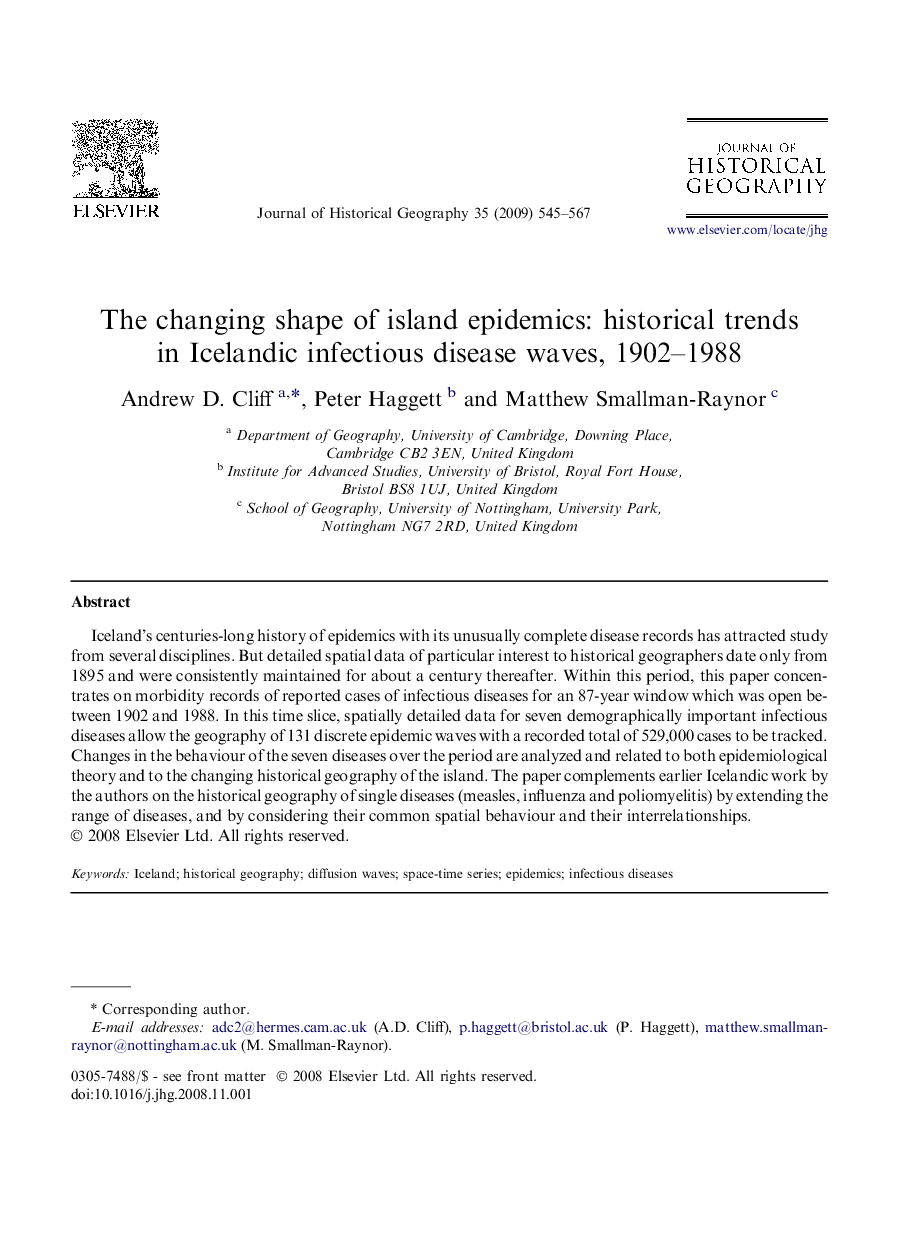| Article ID | Journal | Published Year | Pages | File Type |
|---|---|---|---|---|
| 1039302 | Journal of Historical Geography | 2009 | 23 Pages |
Iceland's centuries-long history of epidemics with its unusually complete disease records has attracted study from several disciplines. But detailed spatial data of particular interest to historical geographers date only from 1895 and were consistently maintained for about a century thereafter. Within this period, this paper concentrates on morbidity records of reported cases of infectious diseases for an 87-year window which was open between 1902 and 1988. In this time slice, spatially detailed data for seven demographically important infectious diseases allow the geography of 131 discrete epidemic waves with a recorded total of 529,000 cases to be tracked. Changes in the behaviour of the seven diseases over the period are analyzed and related to both epidemiological theory and to the changing historical geography of the island. The paper complements earlier Icelandic work by the authors on the historical geography of single diseases (measles, influenza and poliomyelitis) by extending the range of diseases, and by considering their common spatial behaviour and their interrelationships.
